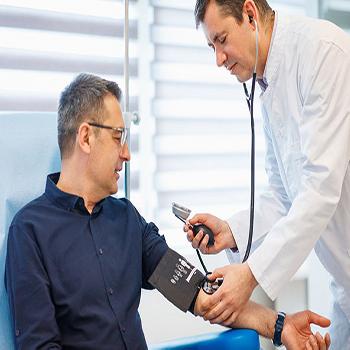A Non-DOT Physical Exam typically includes the following components:
- Medical History Review: The healthcare provider reviews the individual's medical history, including any pre-existing conditions, medications, and previous injuries or surgeries.
- Physical Examination: A thorough physical exam assesses overall health, focusing on vital signs such as blood pressure, heart rate, and weight.
- Cardiovascular Fitness Assessment: Evaluation of the individual’s heart health and cardiovascular endurance, often involving a fitness test or monitoring during physical activity.
- Posture Evaluation: Assessment of body alignment and posture to identify any issues that may affect physical performance or lead to injury.
- Range of Motion Testing: Examination of joint flexibility and mobility to ensure the individual can move freely without restrictions.
- Strength Testing: Assessment of muscle strength across various groups to determine functional capabilities.
- Functional Movements Analysis: Evaluation of everyday movements and activities to ensure the individual can perform job-related tasks effectively.
- Manual Material Handling Evaluation: Testing the ability to lift, carry, push, and pull objects safely, particularly for physically demanding roles.
- Joint Stability Assessment: Examination of joint function to ensure stability and prevent injuries.
- Flexibility Testing: Assessment of overall body flexibility to identify areas that may need improvement.
This comprehensive evaluation helps ensure individuals are physically prepared for their roles, promoting overall health and reducing the risk of injury.
Why would I need this exam?
A Non-DOT Physical Exam is a general health assessment that may be required for various non-commercial purposes. You might need this exam for:
Employment: Some employers require a physical exam to ensure you are fit for specific job duties, especially those involving physical labor or safety-sensitive tasks.
School or Sports Participation: Educational institutions and sports organizations often require physical exams to confirm that students or athletes are healthy enough to participate.
Personal Health Assessment: Individuals may choose to have a physical exam for their own peace of mind or as part of routine healthcare to monitor their overall health status.
Insurance Policies: Some life or health insurance providers require a physical exam before approving a policy.
Will over-the-counter or prescription medications affect the exam results?
Generally, over-the-counter and prescription medications do not negatively affect the outcomes of a physical exam. However, it's important to:
Disclose all medications: Inform the healthcare provider of all medications, supplements, and vitamins you are taking. This information helps the examiner interpret your vital signs and lab results accurately.
Discuss side effects: Some medications can influence blood pressure, heart rate, or other vital signs. Knowing what you're taking allows the examiner to consider these effects during the assessment.
Rest assured that your medical information is confidential and will be handled in compliance with privacy laws like HIPAA.
Do I need to prepare for the exam?
Minimal preparation is needed for a Non-DOT Physical Exam, but to ensure accurate results:
Get adequate rest the night before to help maintain normal vital signs.
Stay hydrated by drinking plenty of water unless instructed otherwise.
Avoid certain substances that could affect your vital signs:
Caffeine and nicotine: These can elevate blood pressure and heart rate. Try to avoid them for at least a few hours before the exam.
Heavy meals or sugary foods: Eating large meals or high-sugar foods right before the exam can affect blood sugar readings.
Wear comfortable clothing that allows easy access for the examiner to perform necessary checks.
Bring necessary documentation:
A list of current medications and dosages.
Medical records related to any existing health conditions.
Immunization records, if available.
Do not discontinue any prescribed medications without consulting your healthcare provider.
How is the exam conducted?
The Non-DOT Physical Exam typically includes:
Medical History Review: You'll discuss your personal and family medical history, including past surgeries, chronic conditions, and any symptoms you're experiencing.
Vital Signs Measurement: Checking blood pressure, heart rate, respiration rate, and temperature.
Physical Examination: The healthcare provider will assess various aspects of your health, such as:
Heart and Lungs: Listening with a stethoscope for any irregularities.
Head and Neck: Examining ears, nose, throat, lymph nodes, and thyroid.
Abdomen: Palpating to check for organ size and tenderness.
Neurological Exam: Testing reflexes, muscle strength, and coordination.
Skin: Observing for any abnormalities like moles or rashes.
Extremities: Checking joints for mobility and signs of swelling.
Laboratory Tests (if required): Blood or urine tests to screen for conditions like high cholesterol, diabetes, or anemia.
The exam is non-invasive, usually painless, and typically takes about 30 minutes to an hour, depending on the extent of the assessment.
